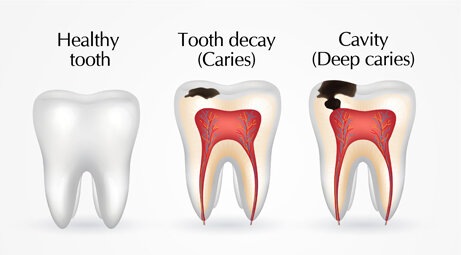Introduction:
Dental fillings play a crucial role in maintaining oral health by repairing and restoring teeth affected by cavities and decay. Understanding the types of fillings dental, the procedure involved, and proper aftercare is essential for anyone seeking to preserve their smile and overall well-being.

Types of Dental Fillings:
- Amalgam Fillings:
Amalgam fillings, commonly known as silver fillings, have been a traditional choice for decades. They consist of a mixture of metals, including mercury, silver, tin, and copper. Amalgam is durable and cost-effective, making it a popular choice for posterior teeth.
- Composite Fillings:
Composite fillings are made of a tooth-colored resin, offering a more aesthetically pleasing option compared to amalgam fillings. They are versatile and can be used for both front and back teeth. Composite fillings bond directly to the tooth, providing excellent support and preventing further decay.
- Ceramic Fillings:
Ceramic or porcelain fillings are known for their natural appearance, closely resembling the color of natural teeth. These fillings are resistant to staining and offer excellent durability. While they are more expensive than other options, many patients appreciate their aesthetic benefits.
- Glass Ionomer Fillings:
Glass ionomer fillings are a blend of glass and acrylic. These fillings release fluoride, helping to prevent further decay. They are commonly used for small fillings, temporary fillings, and in pediatric dentistry.
- Gold Fillings:
Gold fillings are durable and non-corrosive, making them an excellent choice for larger fillings in areas of the mouth that endure heavy chewing forces. Although they are more expensive than other options, their longevity often justifies the cost.

The Dental Filling Procedure:
The dental filling procedure is a common and straightforward process. The dentist follows these general steps:
- Diagnosis:
The dentist begins by identifying the affected tooth through a thorough examination and possibly X-rays.
- Anesthesia:
Local anesthesia is administered to numb the area around the affected tooth, ensuring a pain-free experience during the procedure.
- Removal of Decay:
The dentist removes the decayed portion of the tooth using a drill or laser, leaving behind a clean and healthy surface for the filling.
- Filling Placement:
The selected filling material is carefully placed in layers, with each layer hardened using a special light. This process ensures a strong bond between the filling and the tooth.
- Shaping and Polishing:
Once the filling is in place, the dentist shapes it to fit the natural contours of the tooth. Polishing is done to ensure a smooth surface that feels natural within the mouth.

Aftercare and Maintenance:
Proper aftercare is crucial to maintain the longevity of dental fillings:
- Good Oral Hygiene:
Brushing twice a day, flossing regularly, and using an antiseptic mouthwash can help prevent further decay and maintain overall oral health.
- Regular Dental Check-ups:
Schedule regular dental check-ups to detect any issues early on and address them promptly.
- Avoidance of Certain Foods:
Limiting the consumption of sugary foods and beverages can contribute to the longevity of dental fillings.
- Protecting Teeth:
Using a mouthguard during activities that may pose a risk to teeth, such as sports, can help prevent damage to dental fillings.

Conclusion:
Understanding the types of fillings dental, the procedure involved, and proper aftercare is crucial for maintaining optimal oral health. Consult with your dentist to determine the most suitable filling material for your specific needs and to ensure a healthy, long-lasting smile. Regular dental check-ups and a commitment to good oral hygiene are key components of a successful dental filling experience.





